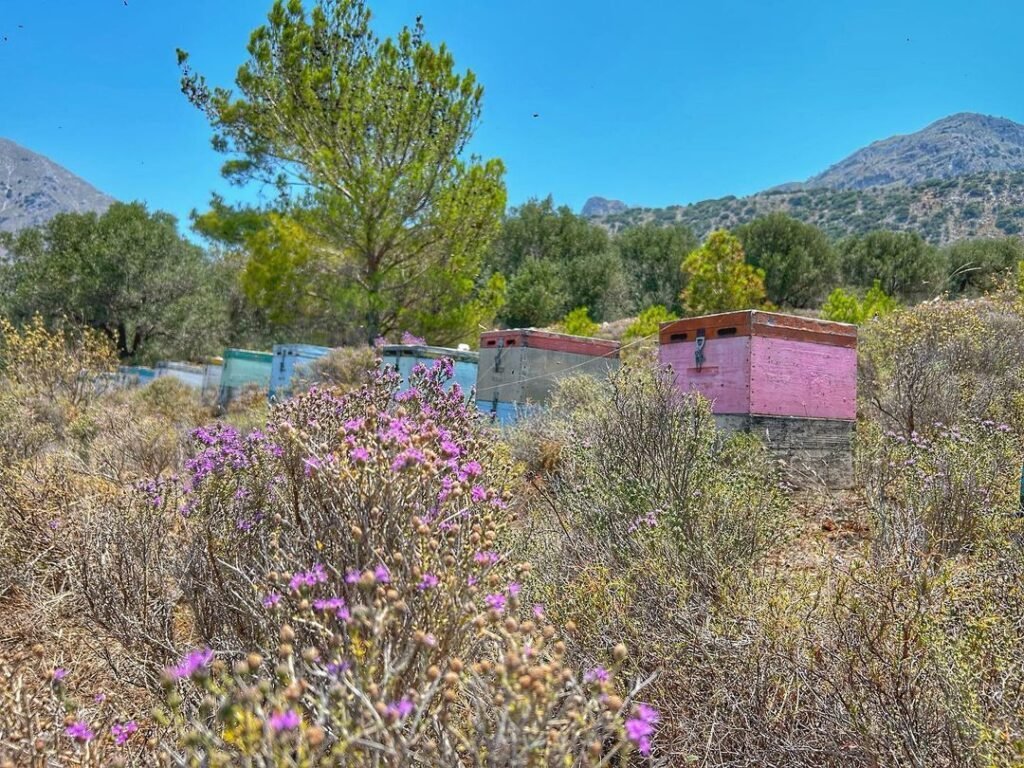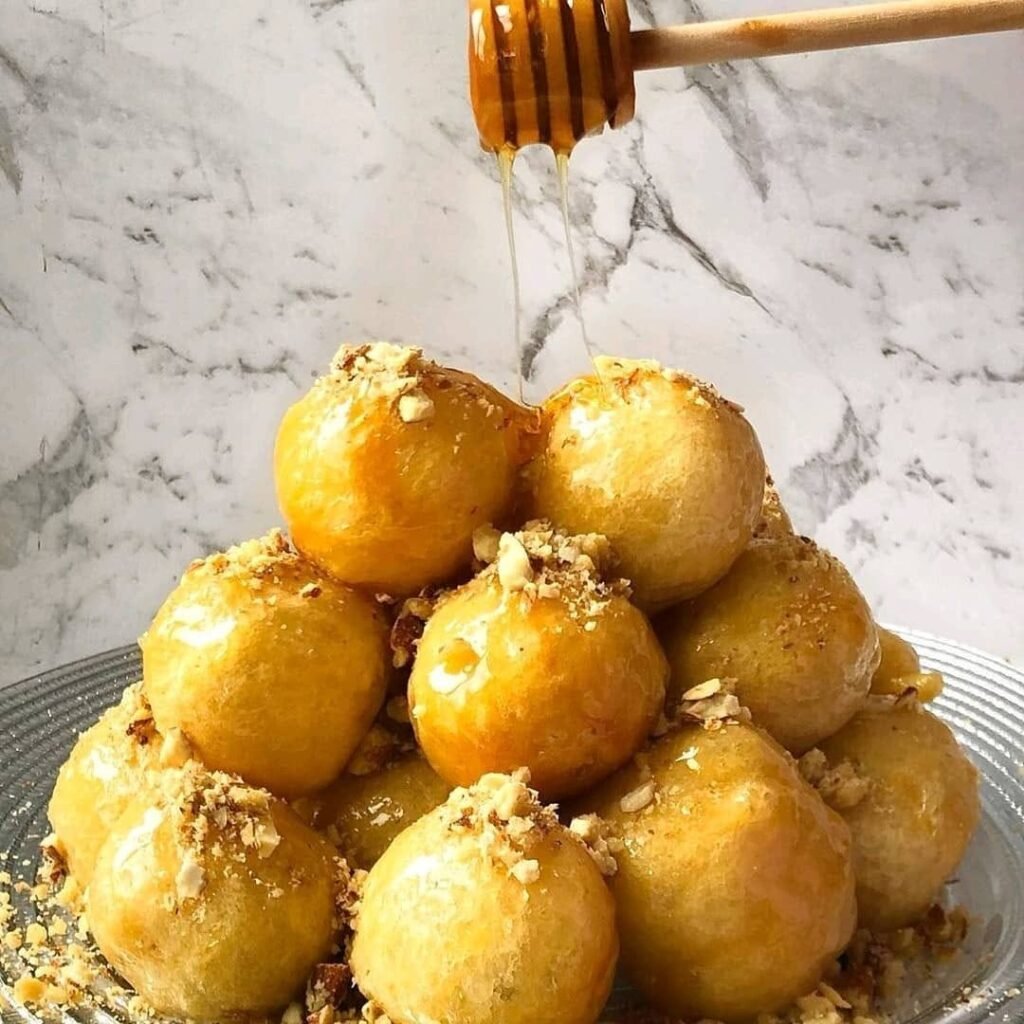Cretan honey stands as one of the most distinguished varieties of Greek honey, boasting a heritage that spans millennia. While Greek honey has gained worldwide recognition, the Cretan variety holds a special place in both culinary and medicinal traditions, setting itself apart through unique harvesting methods and exceptional flavor profiles derived from the island’s distinct geographical features, abundant sunshine, and diverse flora.
From its ancient origins and traditional harvesting methods to its modern-day applications and economic significance, Cretan honey represents more than just beekeeping – it embodies a cultural heritage that has been carefully preserved through generations. This comprehensive guide explores what makes this golden elixir so extraordinary and why it continues to captivate both connoisseurs and health enthusiasts worldwide.
Ancient Origins of Cretan Honey
The rich history of Cretan honey is documented through remarkable archaeological discoveries and ancient texts. The most significant evidence comes from the Minoan palace of Phaistos, where archaeologists uncovered clay beehives dating back to 3400 BC, establishing the island’s beekeeping tradition as one of the oldest in Europe. Standing amid these ancient ruins, it’s mind-boggling to think that beekeeping was happening right here over 5,000 years ago!
A stunning Minoan honeybee pendant discovered in the Chrysolakkos necropolis of Malia (1800-1600 BC) further demonstrates the cultural significance of beekeeping in ancient Cretan society. This artifact reveals that bees were not only valued for their honey but also celebrated in ancient art and jewelry. The excellence of Cretan honey was further documented by renowned Greek philosophers like Pliny the Elder and Pedanius Dioscorides, whose writings praised its exceptional quality – praise that extended as far as Egypt, where references to Cretan honey have been found in ancient papyri.

The mythological significance of Cretan honey adds another layer to its historical importance. According to ancient Greek mythology, nymphs known as the Melissae (meaning “bees”) served as Zeus’s nurses, feeding him honey in his sacred Diktaean cave of Crete. Among these nymphs was Melissa, daughter of the Cretan king Melisseus, who is credited with discovering honey and teaching humanity how to collect and use it, further cementing the deep connection between Cretan culture and beekeeping.
Unique Harvesting Techniques
The production of Cretan honey relies on distinctive harvesting methods perfected over generations. Cretan beekeepers practice seasonal migration, carefully moving their hives across the island to follow flowering patterns, from lowland orange trees to highland herbs. This traditional practice, combined with the island’s exceptional sunshine and limited rainfall, results in honey with concentrated flavors and distinctive characteristics that you can’t find anywhere else. I love driving through the island’s mountain roads and spotting these beehives dotting the landscape – each one a testament to this fascinating tradition.

The process follows a precise seasonal calendar that harmonizes with the island’s natural rhythms. During early spring, beekeepers position their hives near orange groves and flowering plants at lower altitudes. As temperatures rise, they gradually move their colonies upward, following the blooming patterns of aromatic herbs, ultimately reaching the thyme-rich highlands of Crete.
This migratory practice represents more than tradition – it’s a sophisticated strategy for maximizing both honey production and quality. The main harvest occurs during the peak summer months of July, August, and September, maintaining a natural cycle that has sustained generations of beekeepers.

Cretan Honey Varieties and Flavor Profiles
Cretan honey comes in several remarkable varieties, each one telling its own story through distinct flavors and characteristics. While thyme honey wears the crown as the island’s most prestigious variety, other spectacular options deserve the spotlight too.
Thyme Honey: The Crown Jewel
The star of the show is definitely thyme honey, known locally as “thymari.” This golden elixir sports a distinctive light reddish hue and packs an intense aroma that’s simply out of this world. You’ll find it in practically every Cretan household, often exchanged as a treasured gift between family and friends – and for good reason.
This powerhouse variety boasts:
- Remarkable medicinal properties
- Superior antibacterial activity
- Remarkable effectiveness against harmful bacteria like salmonella and E. coli

While thyme honey might not be the antioxidant champion (that crown goes to the darker varieties like oak honey), it more than makes up for it with its intense flavor profile and therapeutic benefits. Its distinctive taste and aroma have made it the most sought-after variety among both locals and visitors.
Beyond Thyme: A Treasury of Flavors
While thyme honey might steal the spotlight, Crete’s diverse landscape produces several other fantastic varieties, with some packing even more powerful health benefits. When it comes to antioxidant properties, here’s where things get really interesting:
- Oak Honey: The true champion of antioxidants – this one’s a real showstopper! Almost black in color with a slightly caramelized flavor that’s less sweet than you’d expect. Sometimes it even throws in a spicy surprise. Fun fact: it contains roughly three times more antioxidants than thyme honey.
- Chestnut Honey: Not for the faint-hearted. Coming in second for antioxidant content, this bold variety brings a strong, slightly bitter punch with an intense aroma. Its dark brown color sometimes shows off reddish tints, and it’s packed with trace elements. Give it a year or two, and you’ll see it crystallize into fine grains.
- Pine Honey: A darker, less sweet variety with robust, slightly resinous flavor and impressive antioxidant levels. Here’s something interesting – it makes up about 60% of Greek honey production and takes its sweet time to crystallize.
- Wild Herb Honey: Talk about a flavor adventure! Each region produces its own unique profile, making it a perfect souvenir that captures the essence of wherever you visited on the island. The flavor and antioxidant content vary depending on which wild herbs the bees have visited.

Culinary Uses and Pairings
Cretan honey stars in both traditional and contemporary island cuisine, appearing everywhere from breakfast tables to elaborate desserts. While many enjoy the simple pleasure of drizzling this golden nectar over fresh bread and butter, its culinary applications go far beyond the basics.
Traditional Sweet Delights
No visit to Crete is complete without sampling loukoumades – irresistible honey-soaked doughnuts dusted with cinnamon and sesame seeds. The island’s take on baklava showcases the distinct character of Cretan honey, perfectly complementing the layers of crispy phyllo and nuts.
My personal favorite breakfast indulgence combines thick Greek yogurt with a generous drizzle of Cretan thyme honey, topped with chopped walnuts or pistachios and a good sprinkle of cinnamon – a simple yet perfect way to start any morning, wherever you are.

Beyond Desserts
Cretan honey isn’t just for those with a sweet tooth. Local cooks use it creatively in numerous ways:
- As a natural sweetener in traditional baking
- To add depth to marinades for grilled meats
- In dressings for local salads
- To enhance various herbal teas
- In energy-boosting breakfast smoothies
One of the most beloved local combinations pairs Cretan honey with the island’s famous cheeses – the sweet and salty contrast creates an unforgettable taste experience. Don’t miss trying it with fresh fruits or sprinkled with locally harvested nuts for a quick, nutritious snack.

Cretan households maintain their own substantial honey stores, keeping large pots of this precious ingredient readily available for both daily use and special occasions. Unlike mass-produced varieties you’ll find in supermarkets, authentic Cretan honey brings a depth of flavor that transforms even the simplest dish into something special.
Traditional Medicinal Applications
Cretan honey’s healing properties have been trusted through countless generations. Even today, you’ll find this natural remedy at the heart of many traditional Cretan homes, where age-old wisdom meets modern understanding of its therapeutic benefits.

Look inside any local kitchen cabinet, and you’ll likely find Cretan honey stored alongside basic medicines. Its applications in traditional healing are remarkably diverse:
- Respiratory Relief: A spoonful mixed with warm water or herbal tea helps soothe sore throats and ease coughs
- Wound and Skin Treatment: Applied directly to minor cuts, burns, and skin irritations, it helps prevent infection and promotes healing
- Digestive Health: Taken before meals to aid digestion and boost metabolism
- Sleep Aid: Combined with warm milk or chamomile tea for better sleep quality

What makes these traditional applications particularly interesting is that modern science now backs up what Cretan grandmothers have known for generations. Research confirms that Cretan honey, especially darker varieties and thyme honey, contains significant antibacterial and healing properties. These findings validate the island’s long-standing use of honey as a traditional medicine, proving that sometimes grandmother really does know best.
As I write this article, I’m actually soothing a sore throat with a therapeutic blend of Cretan herbs and honey: a tea infused with cistus creticus, peppermint, dittany, and chamomile, sweetened with Cretan oak honey, and enhanced with echinacea tincture and propolis – all sourced and grown in Crete. It’s a perfect example of how these traditional remedies continue to serve us today.

Cretan Propolis: The Bees’ Pharmacy
Beyond the renowned Cretan honey, another remarkable bee product deserves special mention. Propolis, often called “bee glue” or “nature’s antibacterial,” has been treasured since ancient times, with Greeks, Romans, and even Egyptians (who used it in mummification) recognizing its healing properties.
This resinous mixture, which bees create by combining tree sap with their own enzymes, beeswax, and pollen, varies in composition depending on local plant species. Greek propolis, including that from Crete, contains unique compounds like anthraquinones, specific terpenes, and significant amounts of flavonoids that set it apart from typical European varieties. It’s also rich in vitamins A, C, and E, along with minerals such as potassium and magnesium, and contains a special compound called pinocembrin.
Bees use this natural defender to seal gaps and maintain a sterile environment in their hives. Local beekeepers harvest it carefully, and you’ll find it in various forms throughout Crete – from raw pieces and tinctures to throat sprays and supplements, often combined with Cretan honey for enhanced benefits.

Traditional uses include:
- Immune System Support: Often taken during cold and flu season
- Oral Health: Used to maintain healthy gums and teeth
- Wound Healing: Applied topically for its antimicrobial properties
- Throat Care: Combined with honey for soothing sore throats
I never want to be caught without a bottle of propolis tincture in my kitchen cabinet, and I’ve made it a habit to pack one whenever I travel – it’s my trusty companion for soothing scratchy throats and boosting immunity on the go.
Note: Those with bee allergies should consult healthcare providers before using propolis products.

Health Benefits and Nutrition
The nutritional profile of Cretan honey extends far beyond its role as a natural sweetener. Each variety offers its own unique set of health benefits, with darker varieties like oak and chestnut honey leading the way in antioxidant content.
Research has identified several key health-promoting properties:
- Natural Energy Source: Complex sugars provide sustained energy release
- Digestive Health: Acts as a prebiotic, supporting beneficial gut bacteria
- Immune Support: Antioxidant and antibacterial properties help strengthen natural defenses
- Cardiovascular Benefits: Antioxidants help protect against oxidative stress
- Sleep Quality: Natural sugars may help promote better sleep through improved glycogen storage
- Anxiety Relief: Traditional use suggests calming properties, especially when combined with herbal teas
The antioxidant power of Cretan honey varies significantly by type, with oak honey containing approximately three times more antioxidants than lighter varieties. These antioxidants play a crucial role in fighting free radicals and supporting overall cellular health.

Most significantly, unlike processed sugars, Cretan honey contains enzymes, minerals, and bioactive compounds that contribute to its therapeutic properties. When choosing between varieties, remember that darker honeys generally offer higher concentrations of these beneficial compounds. During winter months, a spoonful of Cretan honey in my mountain tea has become my daily ritual for staying healthy.
Economic Significance in Crete
The production of Cretan honey represents a significant sector of the island’s agricultural economy. According to 2004 statistics, Crete had over 2,200 beekeepers managing more than 143,000 hives, ranking fourth in Greek honey production. While current numbers may differ, Crete continues to contribute substantially to Greece’s position as the third-largest honey producer in Europe.

However, today’s Cretan beekeepers face mounting challenges:
- Climate Impact: The severe droughts and heatwaves of 2024 caused dramatic production drops of 80-90%, according to multiple sources reporting in August 2024
- Market Pressure: Competition from cheap imports (priced at €0.80/kg compared to €4/kg for authentic Cretan honey)
- Rising Costs: Increased expenses in equipment, transportation, and hive maintenance
Despite these challenges, the premium quality of Cretan honey, particularly the prized thyme variety, continues to command higher prices in both local and international markets. This price difference reflects not just the superior quality of the product, but also the preservation of traditional beekeeping methods and the unique characteristics of Crete’s honey-producing regions. I personally always stock up on several jars of different Cretan honey varieties before heading home – even though I don’t stay away from Crete for too long, I never want to risk running out of this liquid gold!
For many island families, beekeeping represents more than just income – it’s a continuation of cultural heritage and traditional knowledge passed down through generations. Supporting local honey producers helps maintain these ancient practices while ensuring the survival of sustainable beekeeping on the island.

Award-Winning Producers and Certifications
The exceptional quality of Cretan honey shines through in the numerous international awards its producers have earned. These accolades aren’t just medals – they represent generations of expertise and dedication to traditional beekeeping methods.
The Dermanakis Brothers have made their mark with their Lefkoritiko brand, securing multiple Gold awards at the prestigious London International Honey Awards. Their success comes from both pure thyme honey and innovative blends that combine thyme with local flowers and coniferous trees.
Deep in the heart of Crete, the Chatzidakis Family upholds their heritage through the Mellisostati brand. Their commitment to balancing traditional methods with modern quality standards has earned them recognition at multiple international competitions.
A particularly noteworthy achievement belongs to the Stathakis Family, who made history as the first producer in Crete to receive the coveted P.D.O. certification for Cretan Pine honey. Their dedication shines through in their impressive 95+ point gold quality award.
Adding to the island’s honey prestige, Anemelon has captured international attention by securing a Gold award at the Mediterranean Taste Awards, further cementing Crete’s reputation for exceptional honey production.

These award-winning producers share several fundamental commitments:
- Preserving traditional harvesting techniques
- Supporting sustainable beekeeping practices
- Maintaining the purity of Cretan varieties
- Meeting international quality standards
- Protecting Crete’s honey heritage
Their achievements haven’t just put Cretan honey on the global map – they’re ensuring that this ancient tradition continues to thrive for future generations.

Conclusion
From its ancient origins in the Minoan palaces to today’s award-winning producers, Cretan honey remains one of the island’s most precious natural treasures. More than just a sweetener, it represents millennia of beekeeping tradition, unique harvesting methods, and the extraordinary biodiversity of Crete’s landscape. Whether you’re drizzling oak honey over your morning yogurt, adding thyme honey to your therapeutic tea, or using pine honey in traditional recipes, you’re participating in a culinary and medicinal tradition that spans thousands of years. The dedication of modern Cretan beekeepers, despite mounting environmental and economic challenges, ensures that this liquid gold continues to be produced with the same care and tradition as it has been for generations, offering a taste of the island’s rich history and natural beauty in every golden drop.
This post contains affiliate links, which means I may earn a commission if you click and make a purchase at no additional cost to you.

